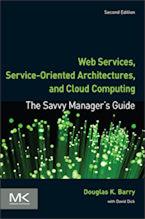Semantic Vocabularies
Every industry group has its own semantic vocabulary for its activity. Various industry groups have been developing their respective vocabularies in order to take advantage of the messaging capability of Web Services.
The semantic vocabularies described on this site are listed below. You can also navigate among the vocabularies by using the menu tree at the bottom of this page.
- Common Semantic Vocabularies
- Address XML
- Computing Environment XML
- Content Syndication XML
- Customer Information XML
- Electronic Data Interchange (EDI) XML
- Geospatial XML
- Human XML
- Localization XML
- Math XML
- Open Applications Group Integration Specification (OAGIS)
- Open Office XML
- Topic Maps XML
- Trade XML
- Translation XML
- Universal Business Language (UBL)
- Universal Data Element Framework (UDEF)
- Specific Semantic Vocabularies
- Accounting XML
- Advertising XML
- Astronomy XML
- Building XML
- Chemistry XML
- Construction XML
- Education XML
- Finance XML
- Food XML
- Government XML
- Healthcare XML
- Human Resources XML
- Instruments XML
- Insurance XML
- Legal XML
- Manufacturing XML
- News XML
- Oil and Gas XML
- Photo XML
- Physics XML
- Publishing XML
- Real Estate XML
- Telecommunications XML
- Travel XML
Context for Semantic Vocabularies
Related Articles for Semantic Vocabularies
Author
Douglas K Barry
Principal
You may use this material for your work or classes. Reprint Policy. Be sure to check the menu at the left for other articles available on this site.
The Savvy Manager's Guide
Douglas K Barry is also the author of a book that explains Web Services, service-oriented architecture, and Cloud Computing in an easy-to-understand, non-technical manner.
Web Services, Service-Oriented Architectures, and Cloud Computing: The Savvy Manager's Guide (Second Edition)
by Douglas K Barry with David Dick
This is a guide for the savvy manager who wants to capitalize on the wave of change that is occurring with Web Services, service-oriented architecture, and—more recently—Cloud Computing. The changes wrought by these technologies will require both a basic grasp of the technologies and an effective way to deal with how these changes will affect the people who build and use the systems in our organizations. This book covers both issues. Managers at all levels of all organizations must be aware of both the changes that we are now seeing and ways to deal with issues created by those changes.

